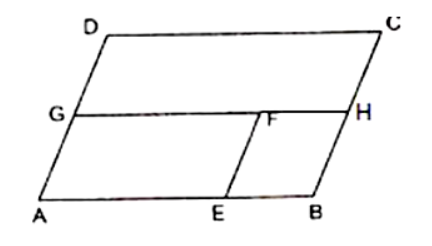In Fig.113, if ACDF and ABCE, then (a) (b)(c)x=145, y=223(d) (e) (b) (f)(g)x=223, y=145(h) (i) (c) (d)(e)x=135, y=223(f) (g) (d) (h)(i)x=233, y=135(j) (k)
Step by step video & image solution for In Fig.113, if\ A C D F\ a n d\ A B C E , then (a) ( b ) (c) x=145 ,\ y=223 (d) (e) (b) ( f ) (g) x=223 ,\ y=145 (h) (i) (c) ( d ) (e) x=135 ,\ y=223 (f) (g) (d) ( h ) (i) x=233 ,\ y=135 (j) (k) by Maths experts to help you in doubts & scoring excellent marks in Class 7 exams.
Topper's Solved these Questions
Similar Questions
In Fig.107, If AOB and COD are straight lines, then (a) (b)(c)x=29, y=100(d) (e) (b) (f)(g)x=100, y=29(h) (i) (c) (d)(e)x=29, y=110(f) (g) (d) (h)(i)x=39, y=110(j) (k)
View SolutionIn Fig. 71, if ABCD and CDEF, find ∠ACE
View SolutionIn Fig.95, If AB, CD and EF are straight lines, then x= (a) 5 (b) 10 (c) 20 (d) 30
View SolutionIn Fig.101, ABCD and EF is a transversal. The value of y−x is (a) 30 (b) 35 (c) 95 (d) 25
View SolutionIn Fig.93, if AOC is a straight line, then x= (a) (b)(c)(d)(e)42(f)0(g)(h)(i) (j) (b) (k)(l)(m)(n)52(o)0(p)(q)(r) (s) (c) (d)(e)(f)(g)142(h)0(i)(j)(k) (l) (d) (m)(n)(o)(p)38(q)0(r)(s)(t) (u)
View SolutionIn Fig.96, If AB, CD and EF are straight lines, then x+y+z= (a) 180 (b) 203 (c) 213 (v) 134
View SolutionIn Fig.97, If AB is parallel to CD, then the value of ∠BPE is (a) (b)(c)(d)(e)106(f)0(g)(h)(i) (j) (b) (k)(l)(m)(n)76(o)0(p)(q)(r) (s) (c) (d)(e)(f)(g)74(h)0(i)(j)(k) (l) (d) (m)(n)(o)(p)84(q)0(r)(s)(t) (u)
View SolutionThe sum of an angle and one third of its supplementary angle is 900. The measure of the angle is (a) (b)(c)(d)(e)135(f)0(g)(h)(i) (j) (b) (k)(l)(m)(n)120(o)0(p)(q)(r) (s) (c) (d)(e)(f)(g)60(h)0(i)(j)(k) (l) (d) (m)(n)(o)(p)45(q)0(r)(s)(t) (u)
View SolutionAn angle is thrice its supplement. The measure of the angle is (a) (b)(c)(d)(e)120(f)0(g)(h)(i) (j) (b) (k)(l)(m)(n)105(o)0(p)(q)(r) (s) (c) (d)(e)(f)(g)135(h)0(i)(j)(k) (l) (d) (m)(n)(o)(p)150(q)0(r)(s)(t) (u)
View SolutionIn Figure, ABCD and AEFG are two parallelograms. If ∠C=580, find ∠F
 View Solution
View Solution

